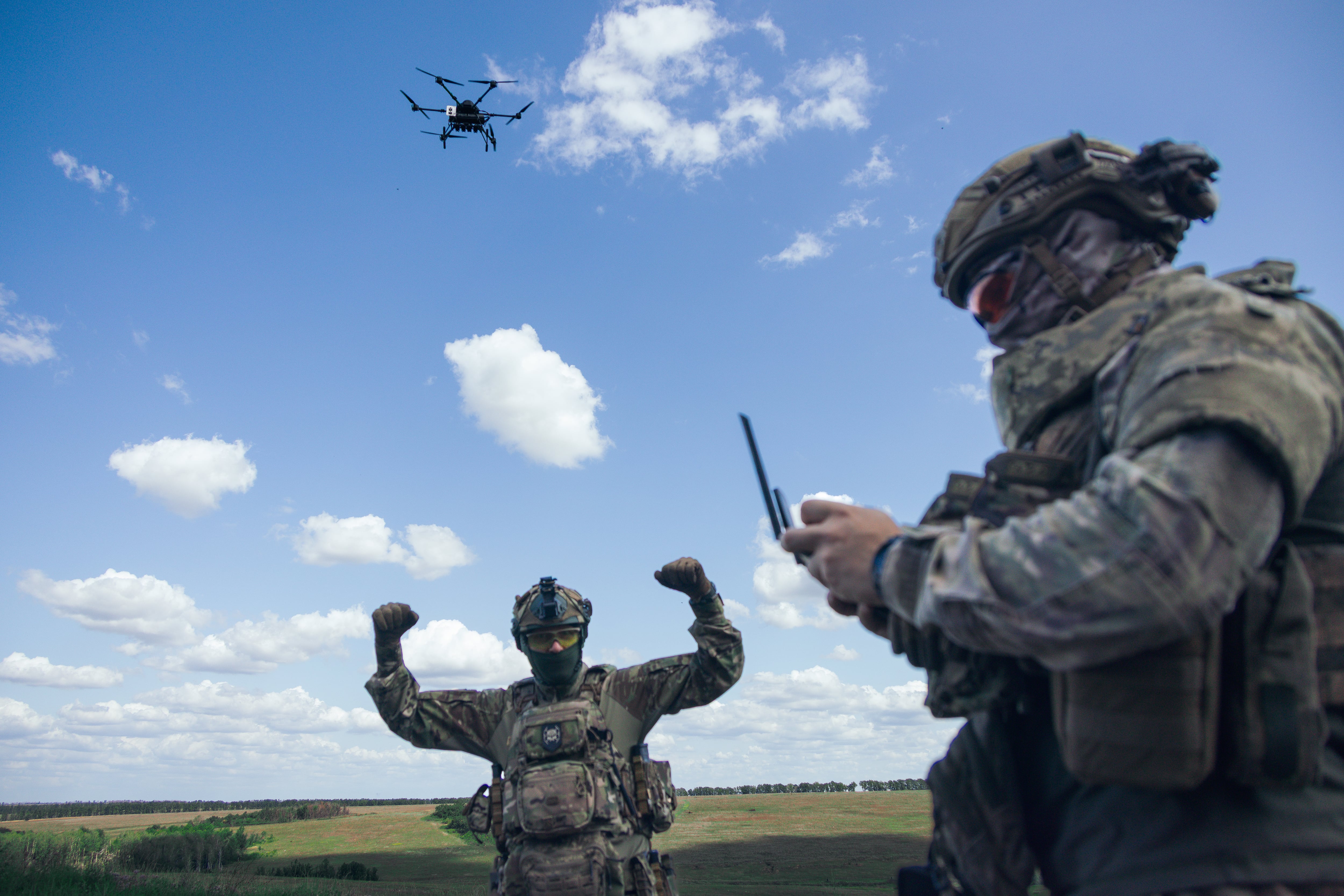Drones are swiftly changing the nature of warfare, but for years, the United States has tied its hands behind its back when it comes to selling cutting-edge drone technology. Washington has long held fast to a strict interpretation of the Missile Technology Control Regime (MTCR) — an informal political agreement formed in 1987 to limit the proliferation of missiles and missile technologies — which the U.S. applied to certain uncrewed aerial vehicles (UAVs) as well, thereby preventing itself from selling its most advanced drones to many key partners. But China, Turkey and others have had no such scruples, which has let them fill the gap and expand their defense sales and influence across the Middle East, Africa and beyond.
The Trump administration has a rare chance to change all that. Last night, the administration announced that it would make widespread changes to its interpretation of the MTCR as part of a broader effort to reform the way the U.S. sells and transfers weapons abroad. This step would face up to today’s realities and help Washington compete far better in today’s increasingly crowded arms market, though, as of yet, there is no clarity on whether the reinterpretation of the MTCR would be matched with clear principles on which UAVs will be acceptable to export and to whom.
Efforts to revise the U.S. approach to the MTCR date back to the first Trump administration, which in 2020 announced that it would reinterpret the regime to treat certain UAVs as Category II technologies instead of the more restrictive Category I, which historically carried a presumption of export denial for UAVs. This effort endured in the Biden administration, which in 2025 announced a revised interpretation of the MTCR to allow more flexible interpretations of Category I, but explicitly excluded the potential for transfers of production facilities and technologies. The second Trump term has picked up right where it left off: The White House issued an executive order in April to streamline defense exports, which was quickly followed by Congressional action, including H.R. 3068 and the Streamlining Foreign Military Sales Act of 2025.
Taken together, the coordinated action between the executive and legislative branches represents a concerted effort to make some of the most comprehensive changes to arms sales and transfers in decades. Nested under this effort is an understanding — shared across party lines — that the competition with China is increasingly expanding to the international arms market. China is a top-five global arms exporter, and has its sights set on expanding its position. Beijing recently displayed new armaments to dozens of foreign heads of state at its military parade, and Chinese officials have been seeking to capitalize elsewhere on the performance of their weaponry in the Pakistan-India crisis earlier this year. Increasing the speed and efficiency of U.S. arms transfers is one way to preclude China from making inroads in new export markets.
UAV sales are increasingly at the forefront of this competition. Sales of armed drones have ticked up dramatically in recent years as countries have witnessed the benefits of utilizing uncrewed, relatively cheap technologies in combat. A new MTCR interpretation opens up the aperture of American UAVs available to countries around the world. U.S. UAVs like the MQ-9 Reaper are likely to be in top demand, as Washington has historically limited the amount of external operators of this advanced platform to select NATO allies and Major Non-NATO Allies (MNNAs). For the United States, expanding sales of MQ-9s would have the dual effect of increasing interoperability with more partners while also blocking out China and others from exploiting a gap in the market.
Nowhere does this competition play out more acutely than in the Middle East. Years of asymmetric warfare and swarm tactics have only increased the demand for large, cheap, uncrewed capabilities. Faced with repeated rejections from Washington, many have turned to outside suppliers, like China. Chinese drones have already been sold to traditional U.S. partners in the region including Jordan, Saudi Arabia, the UAE, Egypt and Iraq. Some have even coordinated with Beijing on manufacturing UAVs. With a new MTCR interpretation in place, the Trump administration seems poised to reverse course and begin exporting UAVs to the region. The U.S. approved the sale of 8 MQ-9Bs to Qatar in March, and Saudi Arabia is reportedly seeking up to 100 MQ-9s as part of a massive arms deal negotiated during Trump’s visit in May.
Revising the U.S. approach to the MTCR is long overdue. As competition with China seeps into other arenas, maintaining a constellation of interoperable allies and partners is crucial for the U.S. Doing so requires meeting market demand, and the demand worldwide — after witnessing conflicts in Europe and the Middle East — is for UAVs. Crucial for the U.S., however, is finding a way to balance meeting this demand with protecting its proprietary information. Beyond the historically strict interpretation of the MTCR, American officials have been reticent to export advanced UAVs for fear that their technologies and capabilities would be vulnerable to adversary collection. This concern is warranted, and U.S. officials should couple the roll-out of this reinterpretation alongside the establishment of strict nonproliferation parameters with partner countries and a robust oversight mechanism to ensure American technologies are not in jeopardy and countries or non-state actors do not take advantage of more lax policy.
Ultimately, for the United States to remain the partner of choice, not just in the Middle East but worldwide, it must continue to balance between meeting market demand and protecting its proprietary technologies. But the balance must also reckon with the original purpose of the MTCR: Preventing the proliferation of missile technologies that could destabilize regions or fuel arms races. Providing the U.S. the ability to simply compete with China in UAV sales is not, in itself, a strategy. The reinterpretation should be coupled with updated nonproliferation standards and robust safeguards to balance both competition and global responsibility. Balancing both can lead to deeper, more sustained defense collaborations in the Middle East and around the world.
Elizabeth Dent is the Nathan and Esther K. Wagner Senior Fellow at the Washington Institute, where Grant Rumley is the Meisel-Goldberger Senior Fellow. Both previously served in the Office of the Secretary of Defense.





